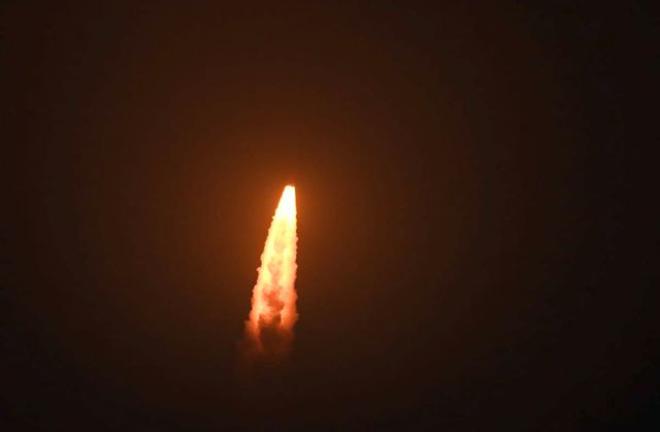The thick orange smoke from the Indian Space Research Organisation’s PSLV C-52 briefly illuminated the pre-dawn black sky and Pulicat Lake as it ascended into the air, breaking the morning silence with the launch vehicle’s booming noise.
ISRO’s first launch in 2022 and under the leadership of new Chairman S. Somanath went off without a hitch, precisely positioning all three satellites in their intended orbits. The PSLV C-52 mission was the 54th for the PSLV and the 23rd for the PSLV-XL version. The mission’s success was critical for ISRO, which had a relatively quiet 2020 with only two flights, one of which – the GSLV-F10 – failed shortly after launch.
ISRO launched EOS-04 from Sriharikota

The PSLV C-52 rocket carrying the Earth Observation Satellite EOS-04, the ISRO’s INS-2TD technology demonstrator, and the INSPIREsat-1 student satellite lifted out at 5.59 a.m. on Monday from the Satish Dhawan Space Centre’s first launch pad in Sriharikota. The three satellites were separated and placed into their respective orbits around 18 minutes later. “The EOS – 04 primary satellite has been placed in a precise orbit. The co-passenger satellites have been placed in the proper orbit,” Mr. Somanath stated, adding that ISRO will “return very soon with the next PSLV launch.”
The EOS-4, a radar imaging satellite with a 10-year mission life, is designed to deliver high-quality images in all-weather circumstances for agricultural, forestry, plantation, flood mapping, soil moisture, and hydrology applications. According to ISRO, the satellite would collect earth observation data in the C band and will complement and enrich the data collected by Resourcesat, the Cartosat series, and the RISAT-2B series.
The INS-2TD is a predecessor to the joint India-Bhutan satellite [INS 2-B], which will measure land and water surface temperatures, crop and forest delineation, and thermal inertia.
INSPIREsat-1 is a student satellite developed by the Indian Institute of Space Science and Technology in collaboration with the University of Colorado in the United States of America. Its mission is to improve our understanding of ionosphere dynamics and coronal heating processes on the Sun. The Nanyang Technological University in Singapore and the National Central University in Taiwan were both members of the INSPIREsat development team. According to Taiwanese media, this was the first time Taiwan partnered with a multinational team on a satellite launch from India.

